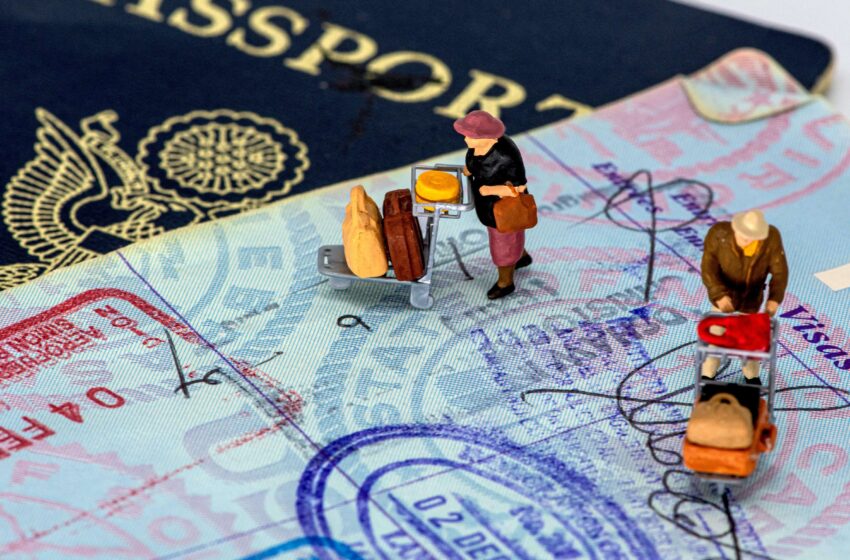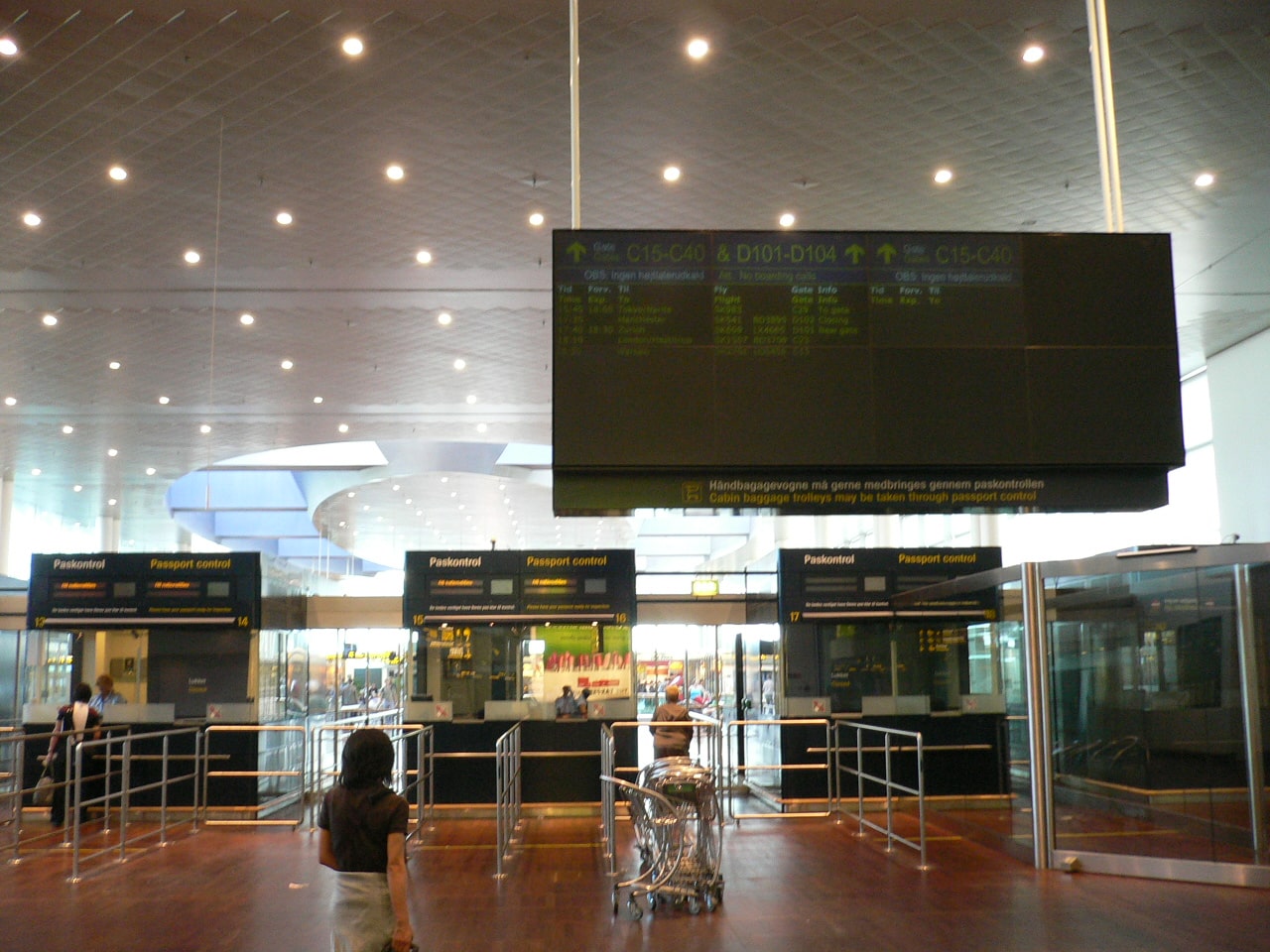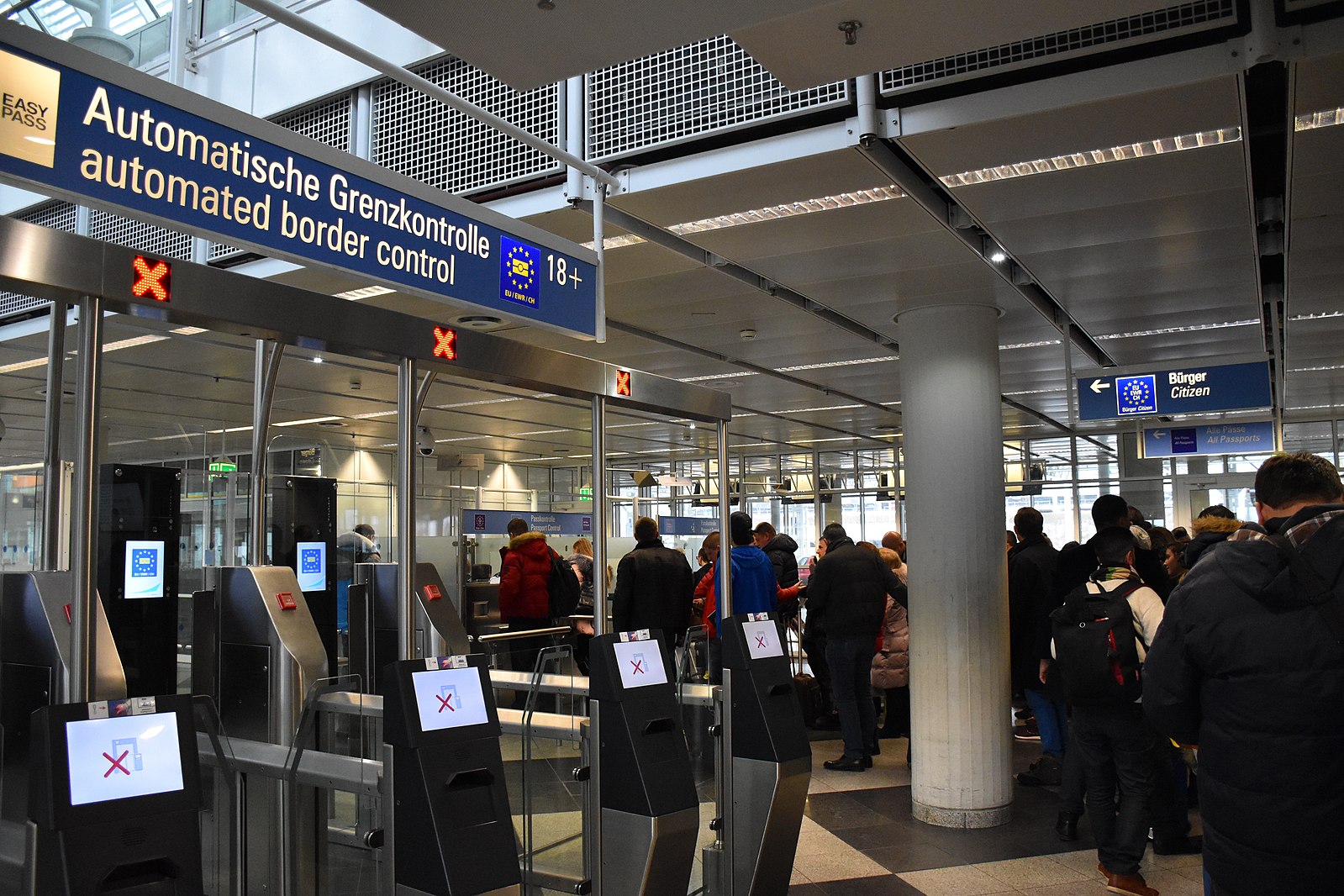
All About Visas and Their Types You Need to Know
- Destinations Top Lists
Cruisit Team
- April 27, 2022
- 0
- 4573
- 37 minutes read
What are the origins of Visas?
The term visa is derived from the Modern Latin phrase “charta visa,” meaning “certified paper,” or “paper that must be seen.” Formerly, visas were separate papers that were carried alongside the passport while international travel; however, most visas now are seals (stamps) or stickers applied to your passport.
You may be wondering, When Was the First Visa Ever Issued? The term “visa” appears for the first time in the Bible, in the book of Nehemiah, around 450 BC. The Persian monarch Artaxerxes gave a prophet a “safe conduct” letter in which he requested safe passage to Judah (region in Jerusalem). This was succeeded by King Henry the V’s reign, who is known for creating the first passport. Passports became a thing that is mandatory after World War I, but it was the Second World War that drove the restrictions and rules, owing to the massive wave of migration that happened globally at the time. This necessitated tougher border patrols in order to avert the risks to national security that come with a large inflow of migrants.
“The Requirement of a Visa all started with Charta Visa,
then was fueled by both World Wars until it became Mandatory“
As the data is obtained from the respective nations, it indicates the rates of denial and approval which are addressed here, as is evident to you. When you’re ready to apply, this data should help you broaden your horizons and make better judgments!
Years later, a visa has become a worldwide phenomenon. A visa is an official document that permits the holder of one nation to enter another lawfully. Typically, the visa is stamped or attached into the bearer’s passport. There are various distinct sorts of visas, each of which grants the bearer certain privileges in the host nation, from short-term stays such as tourist visas to long-term stays such as immigration, employment, or refugee/asylum visas; we cover them all in this article.
What is a travel visa and what are the policies and types?



What Is a Visa Policy and Why does it Exist?
A country’s visa policy is a set of rules that govern who is allowed and who is not allowed to enter the country. The policy may enable passport holders from one nation to enter visa-free, but not passport holders from another. Most visa rules are bilateral, which means that two nations will allow visa-free travel to each other’s people, although this is not always the case. For example, US passport holders can travel to Mexico visa-free, while Mexicans must apply for a visa to visit the US.
Many nations have visa rules and treaties that allow its residents to travel freely between them without requiring a visa. For example, Canadians and Americans do not require visas to visit each other’s countries; just proper travel documents are required. However, US citizens do require visas to travel to Bhutan, for example, because the two countries do not have a visa agreement.
When it comes to visa laws, there are no hard and fast guidelines for countries to follow. However, some common issues include diplomatic connections with the other nation, the country’s history of illegal immigration, if any, cost and tourist aspects, responsibility, and more.
Why Do Certain Countries Have Visa Restrictions?
Countries impose visa requirements to monitor and manage the flow of visitors in and out of the nation, as well as to prevent illegal immigration and other criminal activity. Forcing tourists to apply for visas helps authorities to screen possible guests. Individuals may, for example, seek to migrate to a nation with superior economic chances in order to work illegally there. That may not have been an issue in the past, but it is now unlawful to work in a foreign nation without proper documentation.


Why and when do I need a visa to travel?
Visas are required if you want to visit a nation that does not have a visa policy or diplomatic relations with your home country. Depending on your nationality and the place you desire to visit (for example, tourism), you may be given visa-free entry or even denied a visa for no reason.
When you need a visa is determined on where you want to go. If your home country has a visa agreement with the nation to which you want to go, you will most likely not need to apply for a visa ahead of time. If your home country does not have a visa agreement with your planned destination, you will need to apply for a visa before visiting.
The Types of Visas
Different countries have a slew of visa types that may not be present in another. But, some of these visas are very common in almost all countries. Of course, the most popular of them is the tourist visa, followed by work visas that can be temporary or permanent. Then you have different immigration visas that range from spouse to refugee and asylum seekers, or investor visas.
We explore them all in the collapsable section below.

Traveling does not always necessitate that you obtain a visa. Many countries have visa waiver agreements that allow citizens of a select countries to enter without a visa for short trips. Passport holders from Western countries (such as the United States, Australia, Canada, and the European Union) do not need to get a visa to enter most countries. Visa-free stays are restricted in duration, ranging from a few days to a few months. You should check your visa requirements before traveling, regardless of your nationality. Without a visa, you cannot work or sell products or services while visiting a country.
Travel visas allow the holder to enter a foreign nation only for tourism and leisure purposes and remain for a set period of time. These visas do not allow the holder to work or conduct business in the host nation. Tourist visas are entrance permits provided for recreational activities alone. Tourist visas are typically good for three months, and you cannot work while on a tourist visa. There is often no limit to the number of times you may apply for a tourist visa for the same country—as long as the embassy/consulate approves the visa, you are free to go.
Individuals who desire to work or do business in the host nation must get a work visa. Work visas are classified into different sorts based on the nature of the job and the length of stay. Working holiday visas, for example, allow people to work briefly while traveling through the nation (more on this below). If you find work in another nation, you will need to apply for a work visa. Work visas are often provided for a period of one to four years, however, this varies based on your employment contract. In most circumstances, your working visa serves as a pathway to a permanent residence status.
A digital nomad visa is an alternative to a work visa. You must fit the description of a digital nomad to be eligible for a digital nomad visa. This definition varies by nation, but it is often someone who can work remotely for a corporation or for individual clients. To apply for this visa, you must first locate a nation that has a digital nomad immigration program.
Working holiday visas are short-term and are a hybrid of tourist and work visas. The goal of this visa is to allow you to travel around a foreign nation as if you were on vacation while also working to fund your trip. Most nations have limitations on the sort of job that may be done and the number of hours that can be worked.
They are typically provided for a year or two, and you may only apply for the visa once (except in Australia). In most situations, you must be between the ages of 18 and 30 to apply for a work and holiday visa. Working holiday visas allow the holder to work temporarily in the nation they are visiting. Working holidays are not available in every nation. The most well-known such program is in Australia.
A business visa permits the holder to enter the host nation and conduct business without entering the labor market. For example, if a person is traveling to another nation to do business with another firm or to attend a business conference, they may need a business visa. Typically, the tourist must demonstrate that they are not getting revenue from the nation.
If you make a big financial investment, you can obtain an investment visa and become a resident of another nation. The amount of investment required varies (in a startup, bonds, a government fund, etc.), but the end outcome must be the same: a positive financial effect and/or job prospects. If you buy real estate in some nations, you may also be able to obtain a visa.
A student visa is a form of nonimmigrant visa that permits the holder to enroll in a postsecondary educational institution in the host nation. Foreign exchange students in high school must normally get a visa for temporary residency. Student visas are provided for educational purposes and are normally valid for the duration of your study program. As a consequence, depending on your degree, your study visa may last one to four years, or even longer. You cannot work in another nation while on a student visa unless your host country allows you to.
Individuals escaping persecution, war, natural catastrophes, and other life-threatening situations may be awarded refugee and asylum visas. If you are being persecuted in your native country for religious, racial, or political grounds, you can apply for a refugee or asylum seeker visa. Each nation grants its own visa to accommodate those with refugee status.
Spousal visas allow couples to visit each other when they do not share a nationality, such as when reuniting with relatives. A visa for family reunification is offered if your spouse lives and works in another nation. This visa allows you to become a temporary (or permanent) resident of the country in which your partner works. Any minor children you or your spouse have are normally given a family visa. The family visa also extends to first degree relatives that you may want to reunite with.
Travelers may be required to get transit visas in order to pass through a country that is not their final destination. Transit visas are often necessary if you have a stopover of more than a few hours in a nation. A transit visa permits you to travel through a certain country on your way to a third location. For example, if you have an Indian passport and are heading to Canada, you will require a Schengen transit visa if you have a layover in a Schengen nation.
This sort of visa is usually valid for 24 to 96 hours, but it can also be valid for ten days to two weeks, depending on which nation you transit through. You must apply for this type of visa before leaving your country, transit visas are not issued at airports.
To seek medical care in another nation, you might apply for a medical visa. Medical visas are provided for a limited time, usually for the duration of the medical operation and the patient's recuperation time. To be eligible for this sort of visa, you must give evidence from your doctor detailing your ailment, as well as proof that you have identified a hospital and a doctor in your destination country who will conduct the necessary treatment.
Foreigners who intend to retire outside of their native country are granted a retirement visa. It is only offered to persons who have achieved retirement age and comes in the form of a dwelling permit. Typically, authorities need proof that you have enough money to maintain yourself.
Pilgrim visas are granted to those who wish to complete a religious pilgrimage in another nation. The Hajj visa, which is provided by Saudi Arabia to Muslims who wish to complete the sacred trip of Hajj in Mecca, is an example of a pilgrimage visa. These visas are often given to groups of people rather than individuals and are only valid for the duration of the pilgrimage.
Then there's the issue of an exit visa. An exit visa is a travel document that allows you to depart a specified country. Exit visas are now regarded as an antiquated practice bordering on a violation of human rights, hence most governments do not enforce them. Because of your nationality, you may be required to get an exit visa, so check with an embassy or consulate before you fly.
- Belarus
- China
- Iraq
- Kuwait
- Lebanon
- North Korea
- Oman
- Russia
- Saudi Arabia
- Singapore
- United Arab Emirates

Immigrant and Nonimmigrant Visas
There are two types of travel visas: immigrant and nonimmigrant. Nonimmigrant visas enable the bearer to enter the host nation temporarily, whereas immigrant visas allow the bearer to remain permanently in the host country. As discussed above, the types of visas are either for short-term visits or long-term residency depending on which visa you’ve applied for.
What Does a Visa Look Like?
Visas can now be stamped or pasted into your passport in this modern world. If your visa is glued into your passport, it is normally a little paper with your name, passport number, birth date, purpose for travel, and expiration date. Stamped visas often provide less information. They normally just include the destination and date of validity of the visa, as well as official instructions specifying how many days the visa is valid for. eVisas, on the other hand, have grown in popularity among countries and have been issued in large numbers recently. These online visas can be obtained without the need to visit embassies or have visas stamped or placed into your valuable and limited passport pages.


Applying for a Visa

How Do I Apply for a Visa?
Find the official government immigration website of the nation you wish to visit online. Fill out the relevant travel visa application form after you’ve located and read all of the material, including the visa application requirements. You may be able to submit the form electronically, or you may be required to mail it. If your location needs a visa on arrival, you won’t need to apply for a travel visa ahead of time. In this situation, you may be needed to fill out a visa form and pay any appropriate costs once you arrive at your destination. Check the criteria with the local website or consulate, since you may also need to carry a passport-sized photo.
What Are the Requirements for a Visa?
Each nation has its unique rules for visa applications. To discover out, go to the appropriate government website in your destination country. Filling out the visa application form, giving your passport for stamping if necessary, a photograph, and supplementary papers such as your travel schedule, hotel reservation, or letter of invitation are common requirements.
When it comes to issuing visas, several nations have inadmissibility rules. Potential visitors may be denied entry if they have a criminal record, pose a security danger, have a major health issue, have serious financial problems, or other factors.
If you do not fulfill the visa criteria for the nation you wish to visit, your visa application will most likely be refused and you will be denied admission.

When you apply for a visa at the embassy of the nation you wish to visit, you will be requested to provide supporting papers together with the main visa application. The following are a general example of often requested supporting documents:
- A photocopy of your passport's information page
- The visa will want one or two images of a certain size determined by them.
- Invitation letter
- Evidence of financial backing for the trip whether from your work or parents.
- Travel Insurance
- Plane Tickets
- Proof of trip purpose.
- Fees for visa applications.
Some nations, including Canada, the United States, and some European countries, may require visitors to provide a letter of invitation along with their travel visa application. A letter of invitation is a formal letter from the person you wish to visit requesting you to visit them in that nation. Invitation letters assist travel authorities in screening possible visitors by ensuring that the visa request is for a temporary visit. Check the government website of your target destination for further information on what should be included in such a letter.
After you have submitted your visa application, the nation you wish to visit may require that you attend a visa interview. The majority of visa applications are accepted or refused without an interview, although the immigration officer may request one. During a visa interview, you may be asked the following questions:
- What are your plans (reasons) for visiting "X" country?
- Why do you wish to come at this particular time?
- Do you have a felony (criminal) record?
- Are you traveling with another person?
- Who are you going to see?
- How long will you be visiting?
- Where will you be staying?
- Have you purchased plane tickets yet?
- Do you have Insurance (medical coverage) for this trip?
- If you are currently working, do you have adequate leave from work for the duration of your trip?
- Will you be returning to your native nation following your visit?
- What Are the Visa Application Fees?
- The cost of acquiring a visa varies by nation. To find out how much it will cost, go to the government immigration website of your intended destination. Visa application expenses for visas to the United States, for example, begin at US$160; other nations are more costly or less expensive.
Each nation handles visa applications at a different pace. Check the government website of the nation you wish to visit to see how quickly visa applications are processed. For example, visa applications from Russia to visit Canada take around 8 days to process, but Canadians planning a trip to India should apply at least 15 days in advance. Because of their sluggish processing timelines, some nations may require up to three months in advance.
On their websites or in person, embassies normally provide visa application services, guidance, and up-to-date information about visa and travel requirements. It's always a good idea to check with your destination country's embassy to learn more about going there, and always check their official websites for the most up-to-date information.

The Different Tourist Visas
The words visa-free, visa-on-arrival, and visa-required will be used. While they are self-explanatory, keep in mind that they are always shifting. A nation that you may have entered without a visa a week ago might not be Visa-free today. Check for Visa requirements before flying; else, you may be deported at the airport, which happens very often.
The capacity to travel to a foreign nation without requiring a travel visa is referred to as visa-free travel. Only a valid passport is necessary for admission and leave in this situation.
Visa on arrival refers to the fact that passengers must get a visa in order to enter the destination country, but they can do so upon arrival. Visitors are not need to apply for a visa in advance.
Visa required signifies that visitors must apply for a visa to the nation before visiting there. This can be either through an embassy of that respectful country or could be online like an eVisa. Making sure you have these documents before traveling ensures you have a better possibility of entering the country you wish to go to. Possibility? yes, it's only a possibility because border control officers often have the last word as to whether you will be permitted entrance or not.
What countries can one visit by having a Schengen Visa?
The Schengen zone is made up of 26 European nations. A Schengen visa permits the holder to enter one Schengen nation and then freely travel across the rest of the zone. The following is a complete list of all Schengen member countries:
Austria, Germany, Luxembourg, Slovenia, Belgium, Greece, Malta, Spain, Czech Republic, Hungary, Netherlands, Sweden, Denmark, Iceland, Norway, Switzerland, Estonia, Italy, Poland, Liechtenstein, Finland, Latvia, Portugal, France, Lithuania, and Slovakia are all represented.


Bonus: You can also travel to countries outside Europe with your Schengen Visa
Out of the Eurozone, you can visit the following countries with a Schengen visa:
- Albania
- Antigua and Barbuda
- Belarus
- Bosnia and Herzegovina
- Bulgaria
- Colombia
- Northern Cyprus
- Georgia
- Gibraltar
- Kosovo
- Mexico
- Montenegro
- North Macedonia
- Romania
- Sao Tome and Principe
- Serbia
- Turkey
Final Thoughts
Applying for a visa can be a very hectic process, especially for those who hold unfavorable citizenships. Fortunately, things are starting to lean into becoming more lenient.
After knowing the general details about visas, what are your plans?
Let us know in the comments